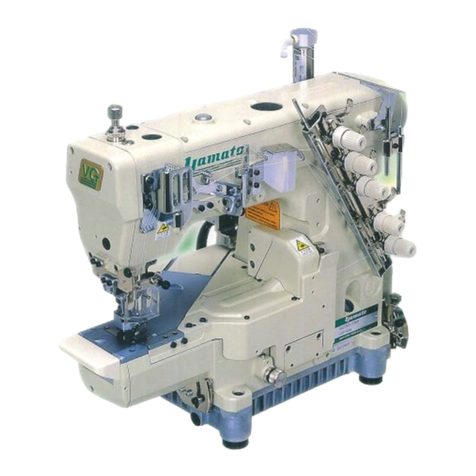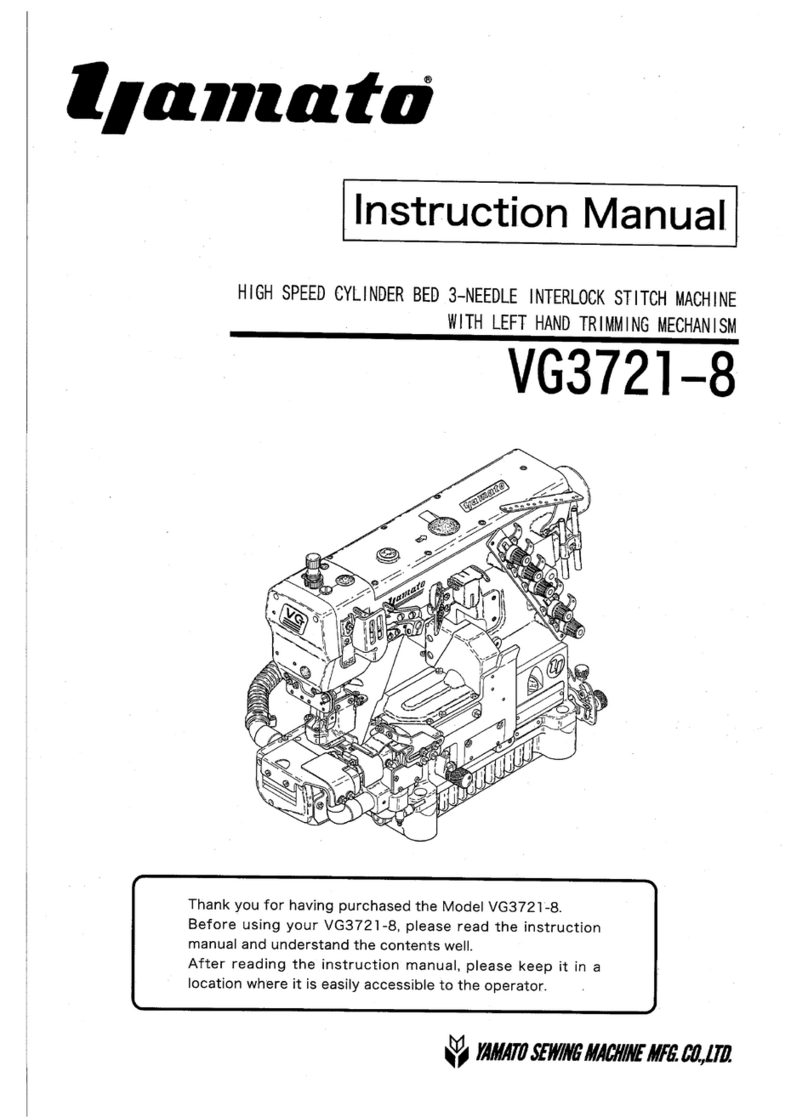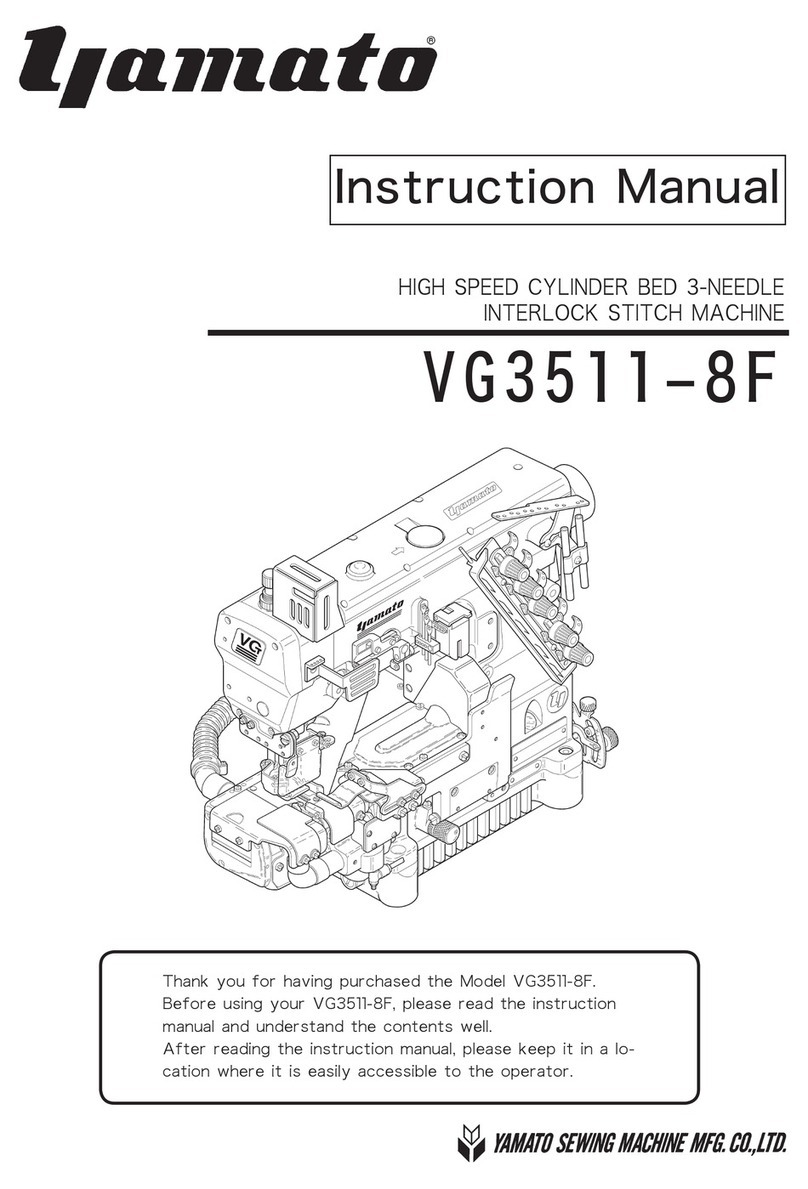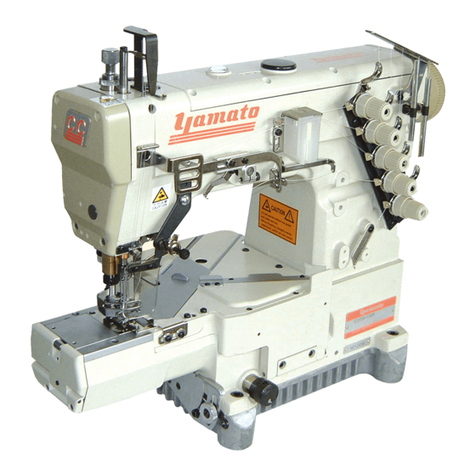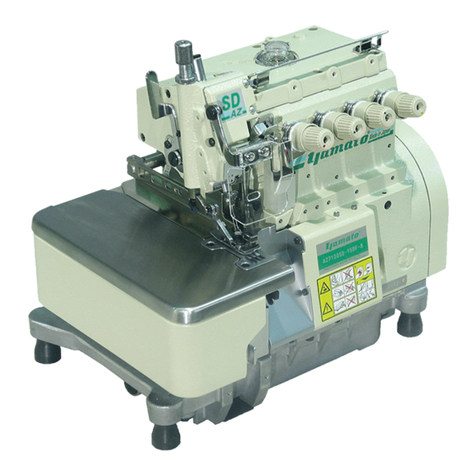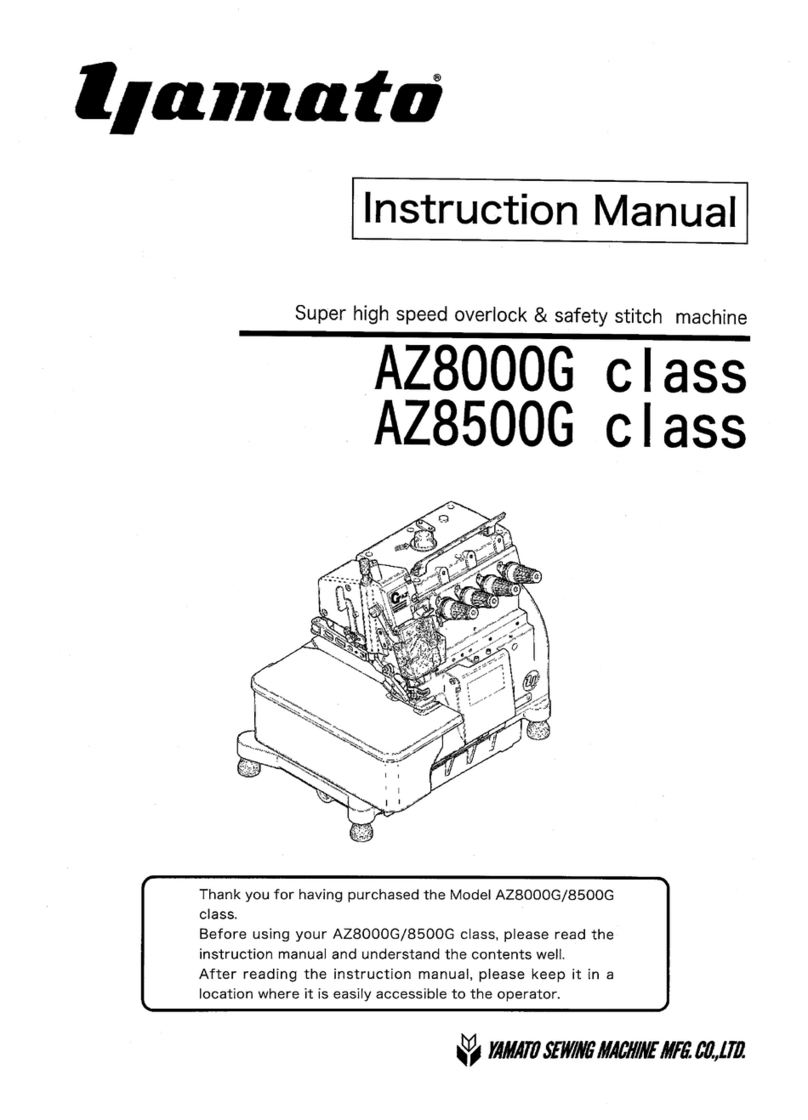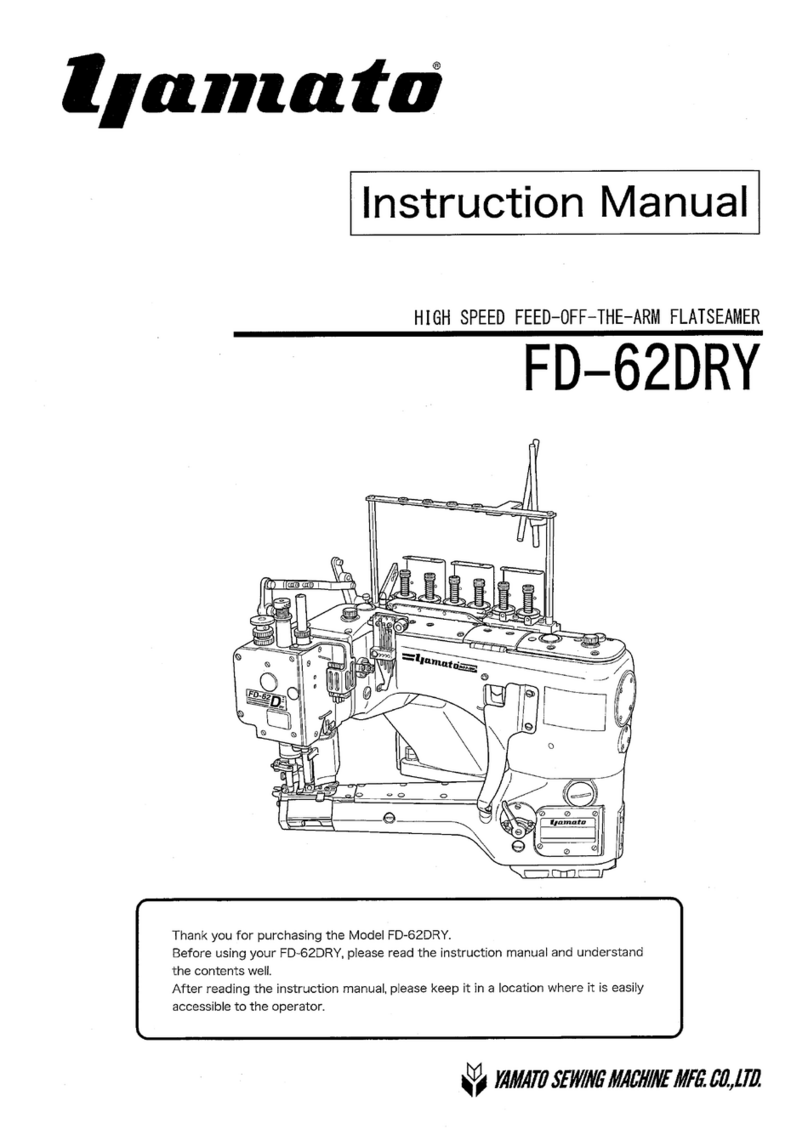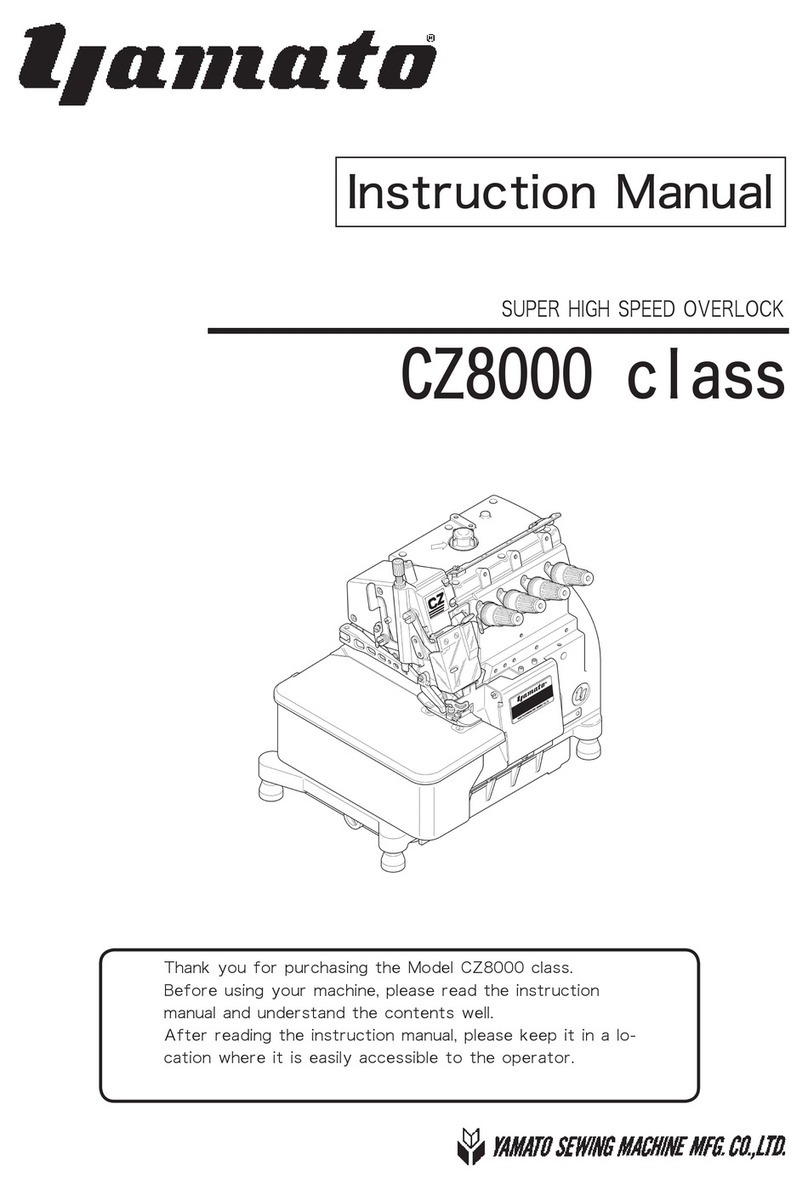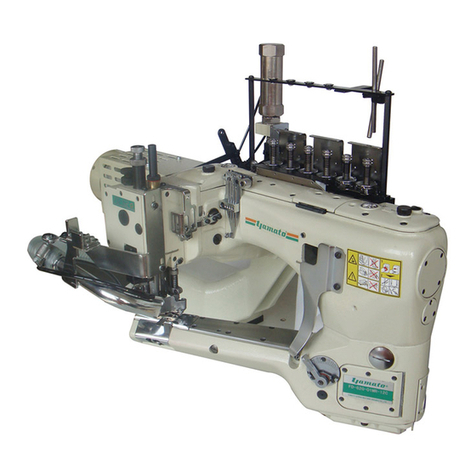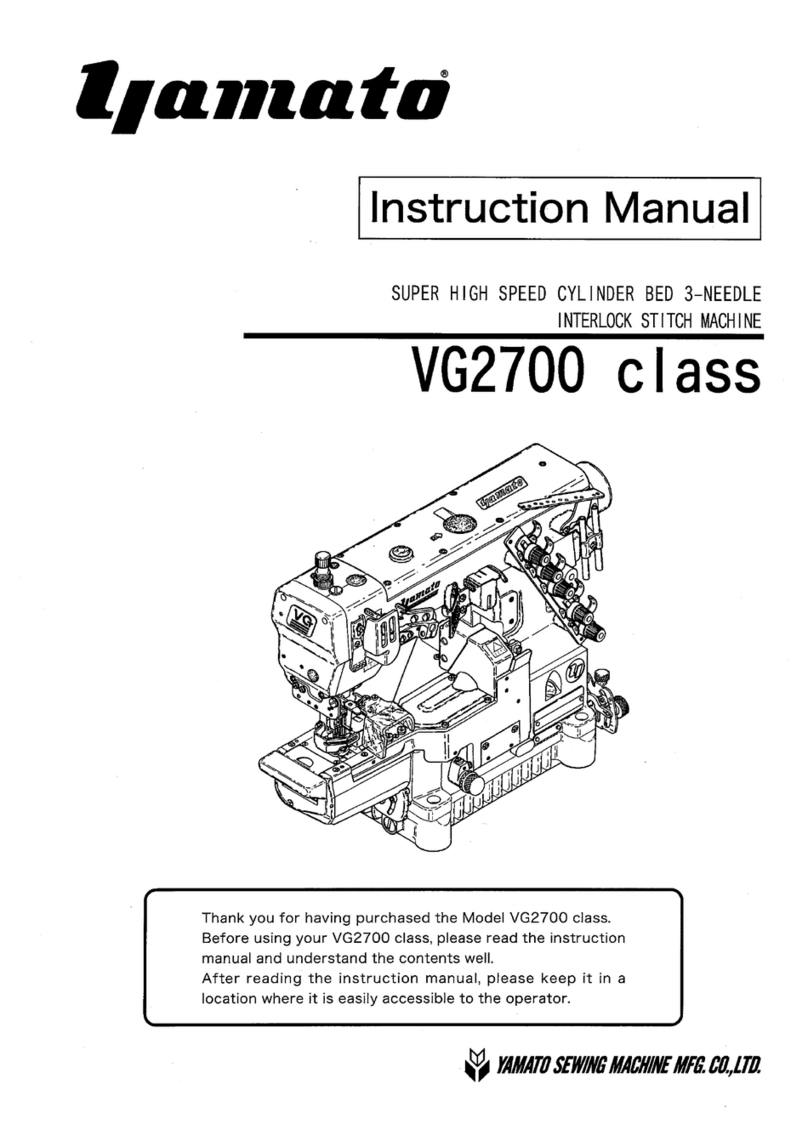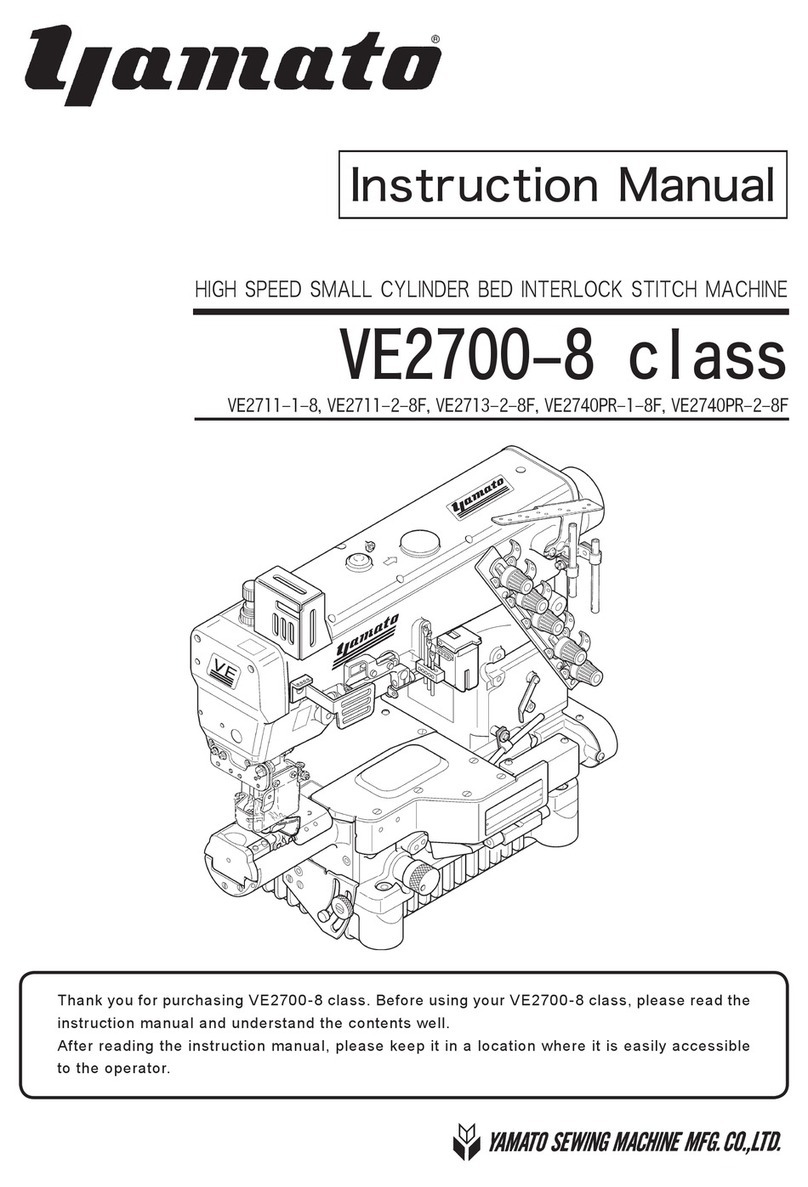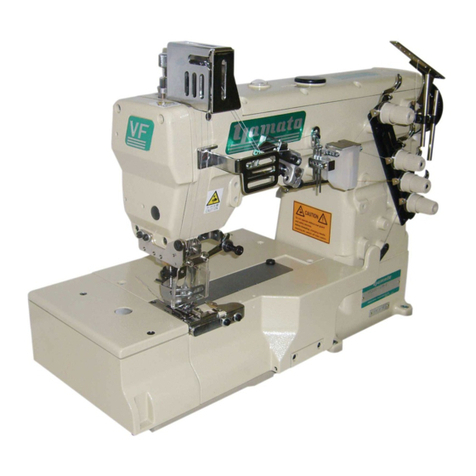
i
Safety instructions
2.Installation and preparation
2-1 Instruction and training
Operators and workers, who supervise, repair or
maintain the machine head and machine unit, are
required to have the adequate knowledge and op-
eration skills to do the job safely. In order to
establish such necessary conditions, it needs
for the employer to plan and enforce the safety
education and training to those workers.
2-2 Sewing table and motor
(1) Prepare a machine table that has enough
strength to withstand the weight of the sew-
ing head and any reaction while operating.
(2) Maintain a comfortable working environment
with considering the lighting and the ar-
rangement of sewing machine so that the op-
erators can work smoothly.
(3) When installing the control box and the re-
lated parts on the sewing machine, take care
about the posture of the worker.
(4) Install the drive unit correctly according
to the instruction manual.
2-3 Wiring
(1) Never connect the plug for power supply un-
til assembly is nished.
(2) Fix the connectors securely to the sewing
machine head, motor, and electric apparatus.
(3) Do not apply excessive force to the connec-
tion cords.
(4) Connect the cords away from the driving
parts.
(5) Place the ground wire securely to the desig-
nated position on the machine head.
2-4 Before operation
(1) Take care not to attach lubricant, silicone
oil, and grease on the eyes or skin.
Keep them away from children.
(2) Be sure to ll or drop lubrication oil be-
fore operating the sewing machine.
Use the Yamato SF oil as specied.
(3) Never put your hand under the needle or near
the moving parts of the machine when turning
on power supply switch.
1. To ensure safe use
Always observe the following instructions to en-
sure the safe use of the industrial sewing ma-
chines and devices.
1-1 Application and purpose
The sewing machine is designed to improve pro-
ductivity in the sewing industry and must not be
used for other applications and purposes. Do not
use this sewing machine until it can be conrmed
that safety measures for the drive units have
been taken.
1-2 Before use
Read all instruction manuals thoroughly before
starting the use of this machine and follow
them.
Also, read the instruction manual for the installed
drive unit.
1-3 Working environment
DO NOT WORK IN THE FOLLOWING ENVIRONMENTS:
- Place where atmosphere temperature and humid-
ity give a bad influence the performance of
sewing machines.
- Outdoors and place where the sewing machines
are exposed to sunlight directly.
- Atmosphere containing dust, corrosive gases or
ammable gases.
- Place where voltage uctuation exceeds ± 10 %
of the rated voltage.
- Place where power capacity necessary for the
used motor specications cannot be secured.
- Place where strong electric or magnetic elds
are generated such as near large-output high
frequency transmitters or high frequency weld-
ing machines.
1-4 Unpacking and transportation
(1) Unpack from the top.
(2) Never hold the parts near the needle or
threading parts when removing the sewing ma-
chine head from the buffer of box.
(3) When carrying the sewing machine head, have
an assistant.
(4) Pay attention not to get excessive impact or
shock when moving the sewing machine head
with a pushcart.

